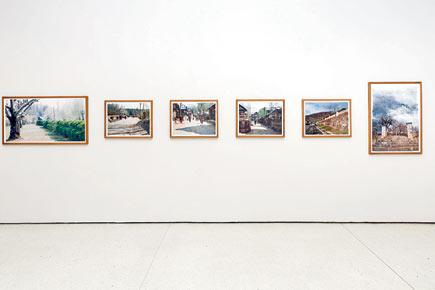Guggenheim UBS MAP Global Art Initiative will be launching its critically acclaimed Contemporary art exhibition, No Country, in Singapore on May 10. the guide looks into the works of three Indian artists, who were invited to present their art at this prestigious international art stage

Sheela Gowda - Loss
Tomorrow, Singapore’s Centre for Contemporary Art (CCA) will host No Country: Contemporary Art for South and Southeast Asia, as part of the Guggenheim UBS MAP Global Art Initiative. The exhibition was first presented in New York at the Solomon R Guggenheim Museum last year (February 22 to May 22, 2013), prior to its showing at the Asia Society Hong Kong Center (October 30, 2013 to February 16, 2014). The exhibition will feature works by 16 artists from countries across South and Southeast Asia, that includes sculpture, photography and installation. Here’s a glimpse of Indian artists Shilpa Gupta, Amar Kanwar and Sheela Gowda’s works that will be on display at this prestigious world forum.
Sheela Gowda (Bangalore)
Loss consists of a set of photographs that were taken by Abdul Gani Lone, an amateur Kashmiri photographer whose aim was to document certain socio-political moments. These landscapes do not easily reveal the darker connotations and appear to be casual tourist photographs of normal daily life in Kashmir.
ADVERTISEMENT
 Artist Sheela Gowda will showcase reworked photographs by Abdul Gani Lone, an amateur Kashmiri photographer
Artist Sheela Gowda will showcase reworked photographs by Abdul Gani Lone, an amateur Kashmiri photographer
But they get another presence when one learns of the political context of Kashmir and the documented streets – streets that lead to the cemetery. This duality of seeing an image was what the artiste responded to, in showing them as found photos and then in reworking one of them with watercolour.
Amar Kanwar (Delhi)
>> A Season Outside is a 1997 analogue and digital colour video with sound (30 minutes). It highlights the thought that there is perhaps no border outpost in the world quite like Wagah, the border between India and Pakistan — an outpost where every evening people are drawn to a thin white line and probably anyone in the eye of a conflict could find him or herself here.

A still from Amar Kanwar’s video work, A Night of Prophecy
>> To Remember is a 2003 digital colour video, silent (eight minutes). It centres around the assassination of
Mahatma Gandhi.
>> A Night of Prophecy (in pic) is a 2002 digital colour video with sound
(77 minutes). It questions if it is possible to understand the passage of time through poetry. And, if that were so, even for one special moment, would it then be possible to see the future?
Shilpa Gupta (Mumbai)
In a glass vitrine lies a large ball of thread. On coming closer, you can see a brass plaque placed in front, on which is etched: 1:14.9, 1188.5 Miles of Fenced Border — West, North-West. Data Update: Dec 31, 2007.

Artist Shilpa Gupta’s large ball of thread
Hand wound over several months, the ovoid orb is made of 79.5 miles of thread. When multiplied by 14.9 (ratio on plaque) it equals to 1188.5 miles, which is the length of the fence that has been constructed on the India-Pakistan border, as per the data released by the Home Ministry of India in 2007. The act of winding miles and miles of thread into a single structure, where the ball is held and turned around thousands of times, embodies a wide range of dervish emotions, be it hysteria, anxiety or hope — which vanish to reappear when lines drawn across communities, that have been around longer than countries were formed, continue to simmer.
The plaque text intentionally says “West, North-West” rather than state names of the countries, dislodging ideas of location every time the work itself would move. There is also a sense of the futility of such mammoth fencing vis-à-vis nature, be it from the human will to move, or the vast expanse of empty deserts and rivers through which the border runs, or the sea and high ice-capped mountains into which it must end. Also, the ratio, 14.9, is a little off from a rounded-off 15, to deal with a sense of inherent doubt with the large-scale mapping exercises that get undertaken.
 Subscribe today by clicking the link and stay updated with the latest news!" Click here!
Subscribe today by clicking the link and stay updated with the latest news!" Click here!







